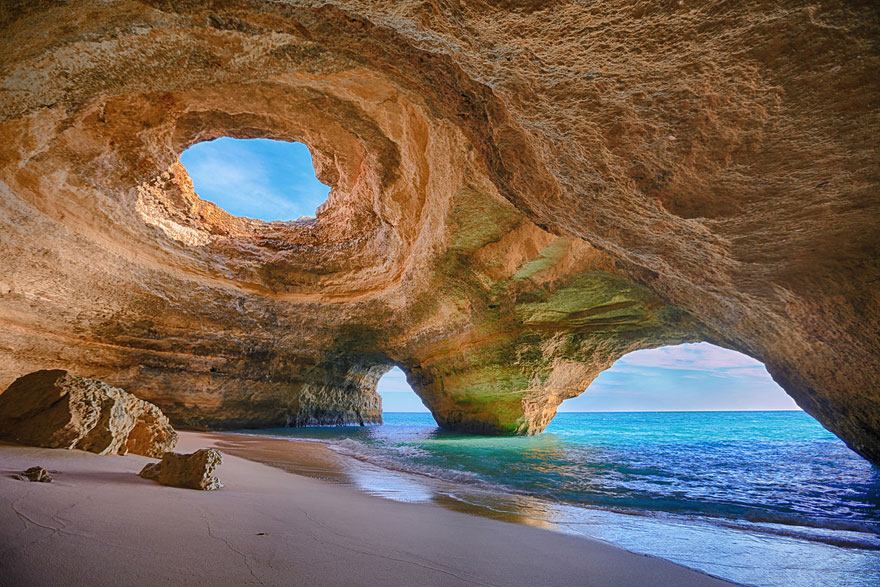
The Son Doong cave in Vietnam is the largest currently known cave in the world. It is filled with countless wonders including isolated ecosystems, weather systems and geological formations. For more information, check out our post about Son Doong.
1. Son Doong Cave, Vietnam
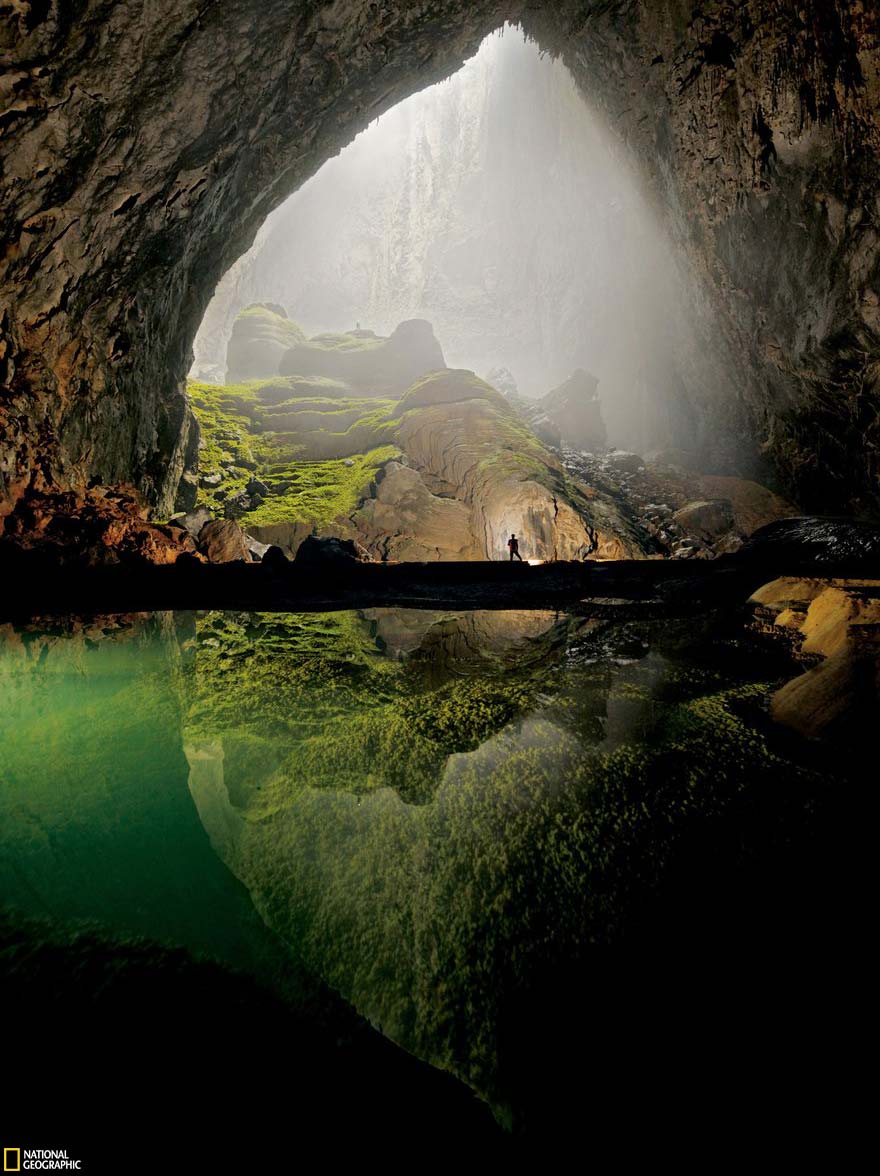 |
The Son Doong cave in Vietnam is the largest currently known cave in the world. It is filled with countless wonders including isolated ecosystems, weather systems and geological formations. For more information, check out our post about Son Doong.
2. Ice Cave Near The Mutnovsky Volcano, Russia
 |
Ice caves like these form in the glaciers surrounding the Mutnovsky Volcano in Russia. Some of them are formed by vents that release volcanic heat and gases called fumaroles.
3. Naica Mine, Mexico
 |
The Naica Mine caves in Mexico are home to some of the largest crystals ever seen. The Crystal Cave, where these crystals are located, is closed to the public because of its depth, heat and other issues. However, plenty of pictures have been taken to document this monumental crystal cavern.
4. Vatnajokull Glacier Cave, Iceland
 |
This cave is located in Iceland’s Vatnajokull Glacier, the largest glacier in Europe. Caves like these form due to melting glacial icewater, but they can be dangerous because glaciers are constantly breaking and changing.
5. Batu Caves, Malaysia
 |
The Batu Caves in Malaysia have been used by English and Chinese settlers as well as the indigenous Temuan people. The bat guano in the cave was mined for agricultural purposes, but now the cave is filled with statues and is open to visitors.
6. Mendenhall Glacier Cave, USA
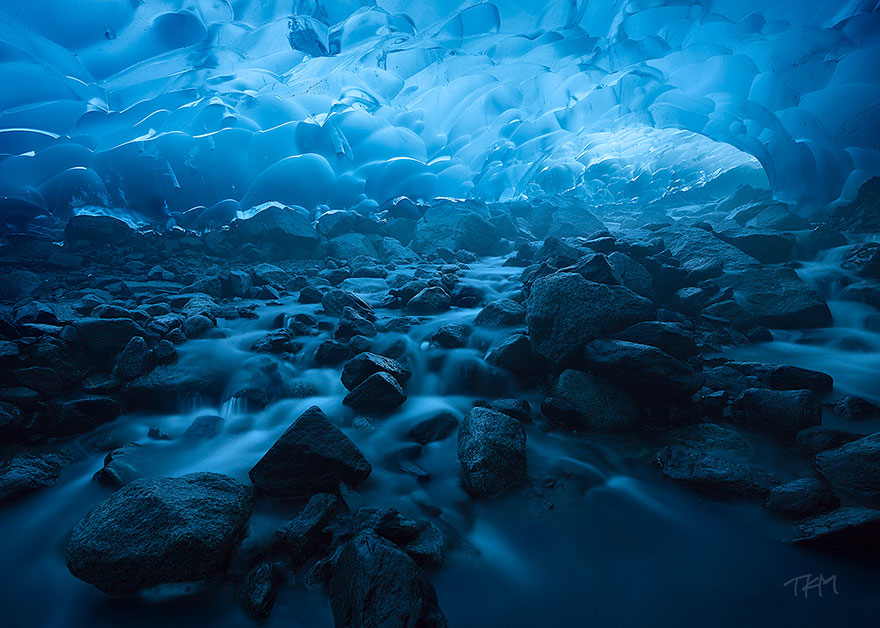 |
This ice cave is part of the Mendenhall Glacier near Juneau, Alaska. The spectacular cave was carved out of the glacier by melting icewater. Due to the ever-changing conditions at glaciers, it is unclear whether this cave will still be around for long.
7. Cave in Algarve, Portugal
 |
The Algarve region in Portugal, where this cave is located, is prone to various seaside formations because of the rock face’s relative solubility in water. This specific cave near Lagos is accessible only by water.
8. Glowworms Cave, New Zealand
 |
The Waitomo glowworm caves in New Zealand are home to a unique insect – the glowworm. This insect hangs glistening silken strands from the ceiling of the cave and glows to attract unsuspecting prey. To read more about this fascinating and unique ecosystem, check out our post about the Waitomo caves.
9. Tham Lod Cave, Thailand
 |
The Nam Lang river runs through the Tham Lod cave in northern Thailand. The cave is filled with beautiful stalactites and stalagmites and is home to hundreds of thousands of Pacific swifts that have adapted to spend parts of their lives in caves.
10. Kyaut Sae Cave, Myanmar
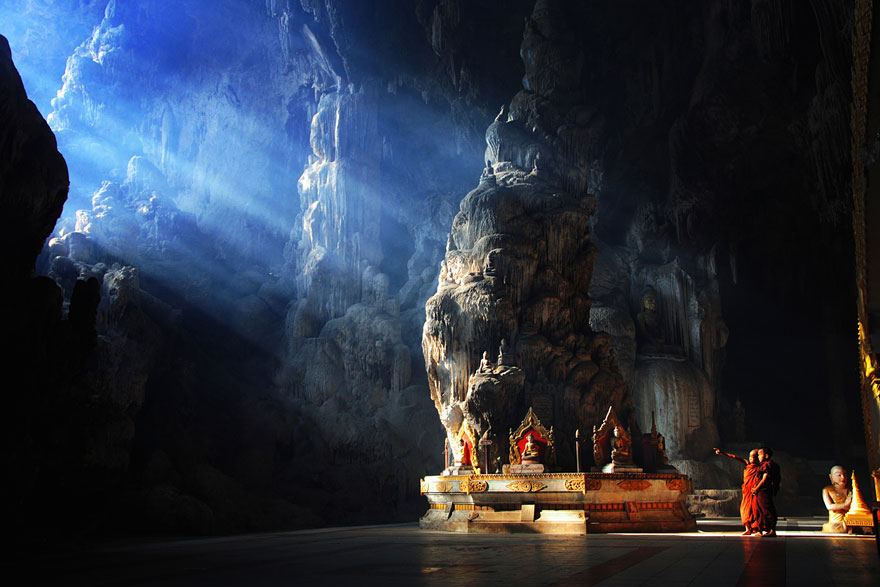 |
Very little is known about this cave in Kyaut Se, Myanmar, other than that the inside has been fitted as a Buddhist temple.
11. Marble Caves, Patagonia
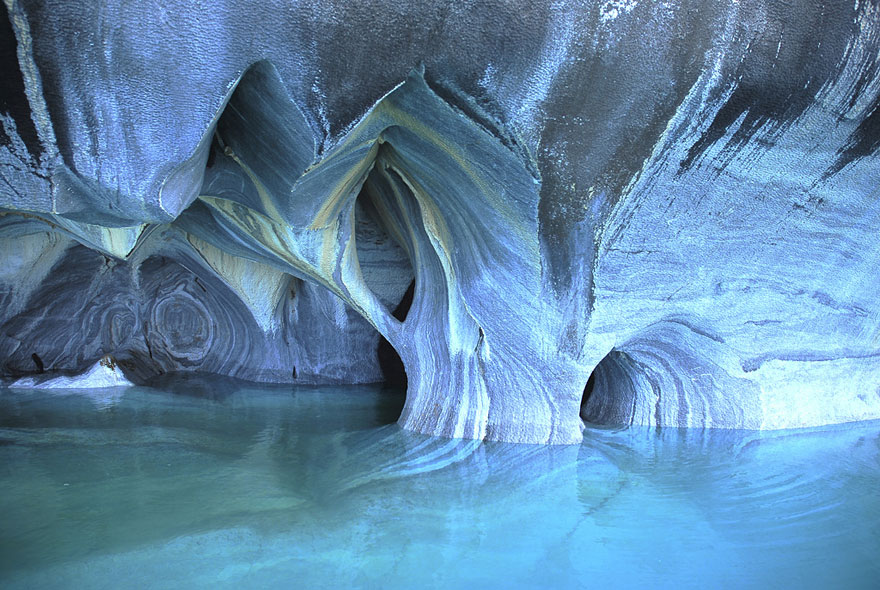 |
The Marble Caves in Patagona are known for the spectacular reflections that the turquoise water casts on the white marble ceiling of the cave. They are also called the Marble Cathedral because of their beautiful and arching forms.
12. Antelope Canyon, USA
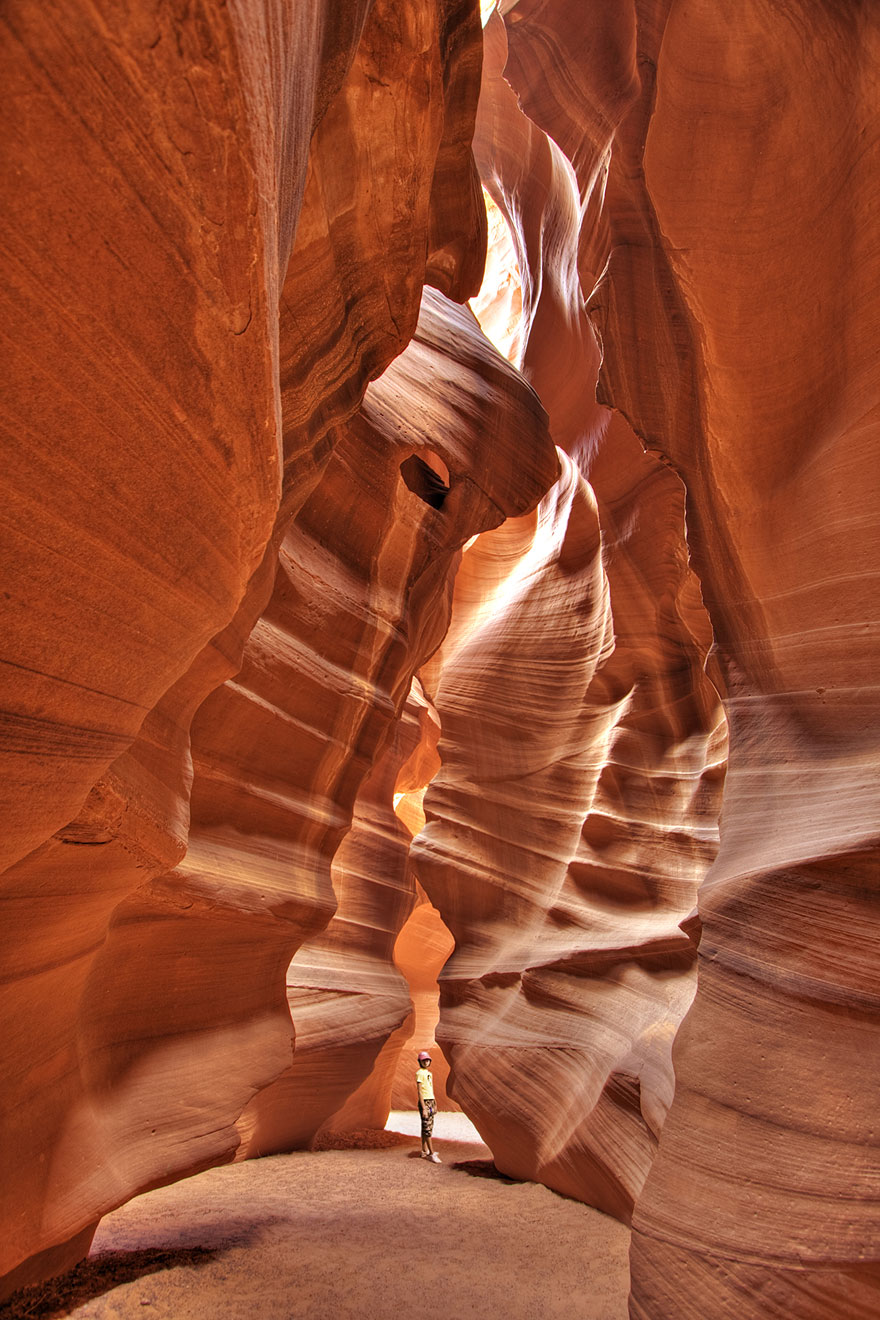 |
Antelope Canyon in Arizona was carved out by thousands of years of persistent wind and flash floods, which is why its smooth walls look so smooth and fluid. During the desert’s monsoon season, dangerous flash floods can occur without warning from rains that have fallen miles away. These flash floods have taken the lives of quite a few unwary tourists.
13. Phraya Nakhon Cave, Thailand
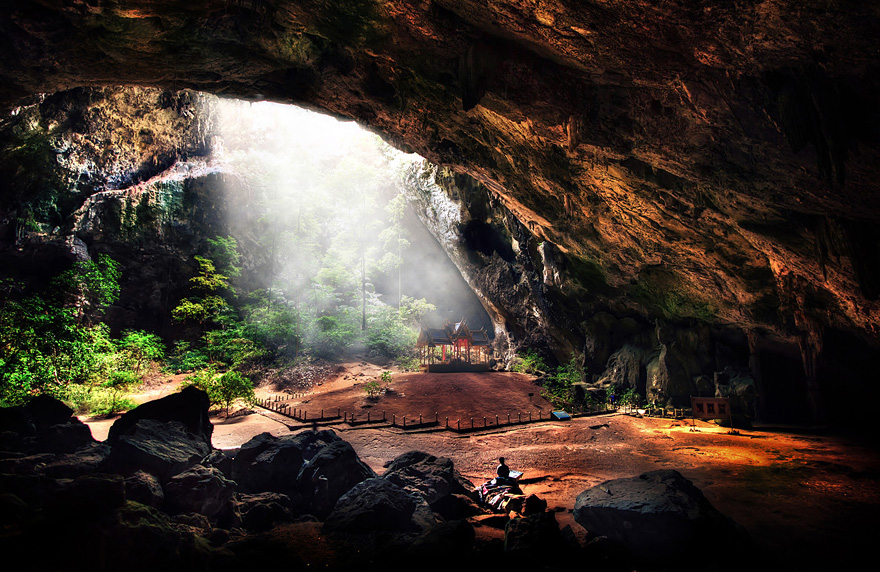 |
The Phraya Nakhon Cave in Thailand was historically a popular visiting place for local kings because of the illumination provided by the collapsed roofs. The pavilion in the center was built for the visit of King Chulalongkorn in 1890.
14. Ellison’s Cave, USA
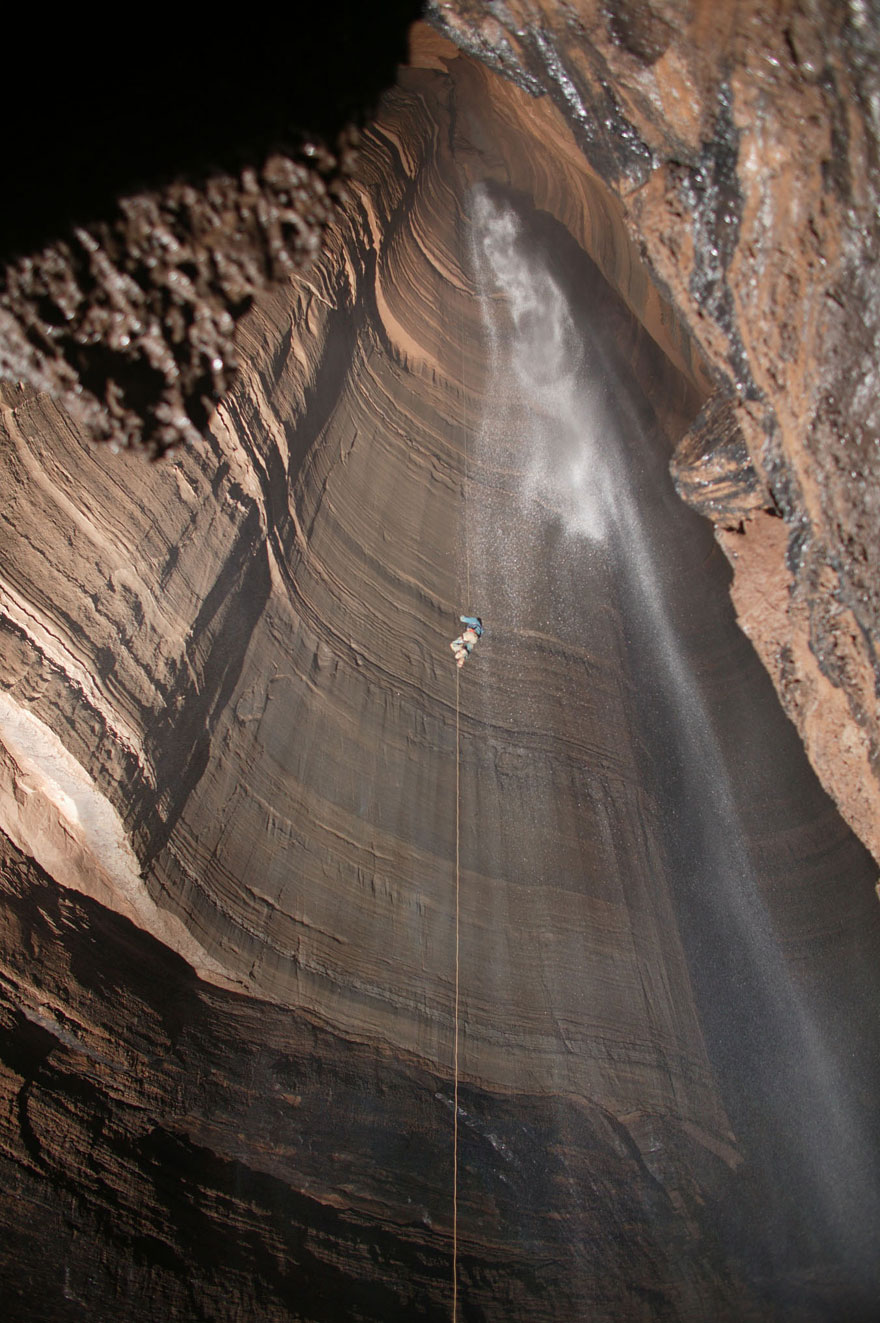 |
This is the Fantastic Cave pit, part of Ellison’s Cave in Georgia, U.S.A. It is a popular attraction for pit cavers – those who enjoy rappelling down vertical subterranean drops.
15. Reed Flute Cave, China
 |
The Reed Flute Cave in Guangxi, China has been visited by tourists for at least 1200 years. The cave is home to a spectacular array of stalagmites and stalactites. It is named for the reeds that grow at its mouth, which can be made into flutes.
(Source: boredpanda)





